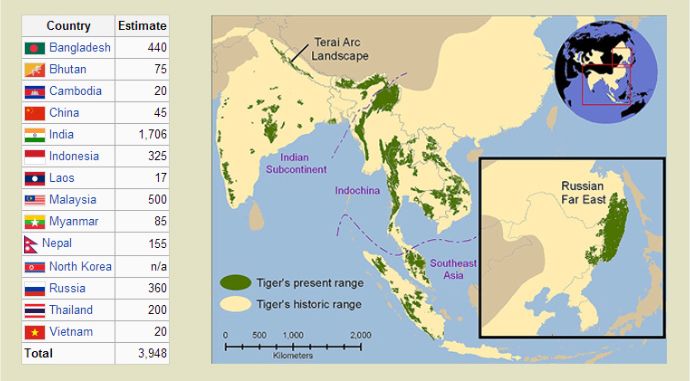
200 Farms in China Breed Tigers for Slaughter for Body Parts, Luxury Goods

In legal tiger farms across China, some 6,000 caged cats are kept in filthy conditions and will be killed for dubious medicinal uses and as home decor for the country’s newly-rich elite. The sordid business is mostly legal, but hides behind carefully-worded agreements and pretensions of conservation. The issue is expected to be addressed at this week’s Convention on International Trade in Endangered Species (CITES) meeting in Johannesburg.

It is estimated that 60 percent of China’s 1.4 billion people use so-called traditional medicines made from tiger bones, rhinoceros horn, bear gall bladder and other exotic animal parts. As China has grown in recent decades, creating a larger middle class and many newly rich entrepreneurs, demand for tiger parts has grown.
https://twitter.com/EcoWatch/statuses/687736442370428928 expand=1]
“The use of endangered tiger products and their medicines is seen as a symbol of high status and wealth,” states Tigers in Crisis.
China signed on to CITES, but maintains about 200 tiger farms, where tigers are bred to serve this growing market. Claiming that these tiger parts are for domestic consumption, and therefore not subject to the treaty on international trade, China also defends the tiger farms as a captive breeding program that actually helps the species.
However, in 1993, China banned trading in tiger bone, and a 1988 wildlife law that purports to protect endangered species sets forth a policy of “actively domesticating and breeding the species of wildlife.”
“What we didn’t understand until very recently is that ban in 1993 did not supersede China’s wildlife protection law, which was crafted in the 1980s and actually mandates the farming and consumption of tigers and other endangered species,” author and wildlife activist Judith Mills told Yale Environment 360 in an interview last year.

Among the luxury products made from these farmed animals is tiger bone wine, which can sell for $257 per 500 ml (about 17 ounces). But almost every part of the tiger is alleged to have some medical use: the brain, whiskers, eyeballs, nose, penis, tail and feet. Tiger skins and whole stuffed tigers are a status symbol in wealthy Chinese homes.
Far from saving the species, tiger farms promote demand for these body parts that makes poaching wild tigers even more lucrative.
“The problem with tiger farming is that it stimulates demand for tiger products, which stimulates poaching of wild tigers because products from wild tigers are considered superior, more prestigious and they’re exponentially more valuable,” Mills said.
The World Wildlife Federation (WWF) counts the number of tigers in the wild at 3,890.

A February 2013 report by the Environmental Investigation Agency concludes that “wild Asian cats are being poached to supply the market demand stimulated by China’s legal domestic trade in skins of captive-bred tigers at a time when the international community has agreed that demand reduction is essential to save wild tigers.”
The report also notes that tiger farming and trade has spread to other Southeast Asia countries including Thailand, Laos and Vietnam. Recently, Laos announced its intention to phase out tiger farms.
[vimeo https://vimeo.com/175718832
In July, the Environmental Investigation Agency called on CITES to adopt concrete measures to end tiger farms. Even if adopted, it remains to be seen if China will abide by the regulations or find another loophole. The Guardian reports that a farm in northeast China is cross-breeding tigers with lions, thus creating a “liger” that the Chinese say is not covered by its own 1993 law.

 233k
233k  41k
41k  Subscribe
Subscribe 